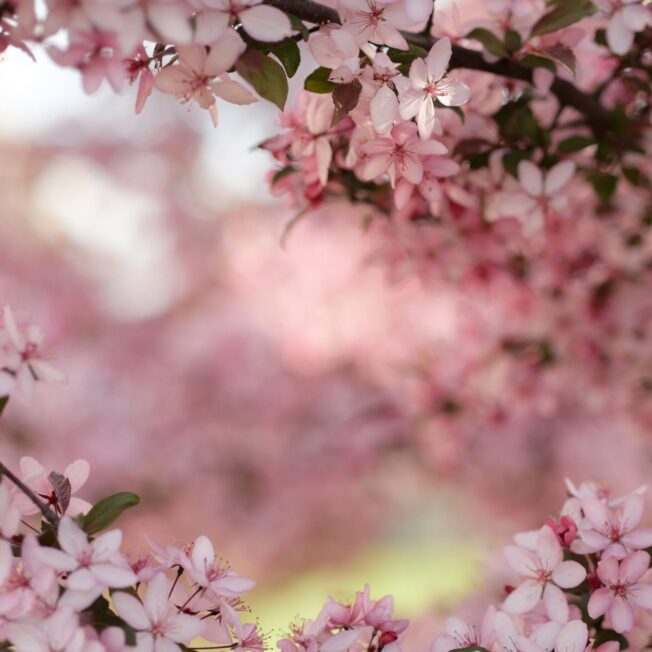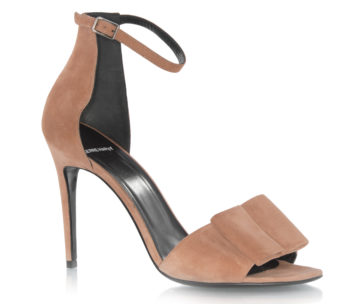About three years ago, I stopped wearing a bra. As someone with D to DD breasts (depending on the bra and my fluctuating weight), this was kind of a big deal. It was noticeable to anyone with eyes, it made my clothes fit differently, and it felt so… freeing.
My reasons at the time were mostly about bucking tradition and rejecting the idea that a women’s breasts were supposed to look a certain way. I mean, that’s really what bras are for, anyway: to transform sagging, uneven, or pointy breasts into two rounded, uniform, perky, squeezed-together appendages fit for the male gaze. I wanted to challenge that. To put my uneven, low-hanging boobs on display and still feel powerful, sexy, and worthy.
It wasn’t as easy as I thought it would be.
As young girls, bras are presented to us as a bastion of womanhood. Shopping for your first training bra is a rite of passage, graduating to an actual cup size signals a sexual awakening of sorts, not graduating to an actual cup size often results in shame (or bra-stuffing). It’s all very complicated and mixed up with emotion — and when I ditched the bra, these emotions floated to the surface. I questioned my beauty, my confidence, and my self-worth. I became anxious, thinking random passersby were judging my too-bouncy, not-perky boobs. I was about to go back to the bra, when I discovered an interesting study about the link between bras and breast cancer.
In the 1995 book Dressed to Kill: The Link Between Breast Cancer and Bras, researchers Sydney Ross Singer and Soma Grismaijer explored the results of a 1991 study from Harvard University, as well as their own 1993 study of 5,000 women, and were able correlate bra usage to a higher risk of breast cancer. The women in the study who didn’t wear bras had half the risk of breast cancer. A full 50 percent less!! The study also found that the less time a woman spent wearing a bra, the lower her risk for developing breast cancer; and women who wore bras 24 hours a day were 125 times more likely to develop breast cancer.
If you’re wondering why you’ve never heard of this before, it’s because the study is hotly debated. Plenty of doctors and researchers have called the researchers’ methods into question, casting a shadow of doubt on their findings. However, other studies have since made similar discoveries: A Chinese study in 2009 found that women who didn’t sleep in their bras were 60% less likely to get breast cancer; a 2011 Venezuelan study found a link between underwire and push-up bras and cancer; a Scottish study linked how long women wear bras each day to proportional breast cancer rates in 2014.
Then, also in 2014, the National Cancer Institute conducted its own research of 1,500 women and debunked all the previous claims — this particular study found no correlation between bras and breast cancer.
Now, what you believe is up to you — you can take a look at some of the studies here, here, and here to draw your own conclusions — but I’m a play-it-safe kind of lady. Researching these studies helped me to stick to my no-bra policy; not only to rebel against unrealistic and unnatural standards of beauty, but also to protect my health.
Here’s what convinced me.
The Lymphatic Drainage Factor:
The lymphatic system is our natural detox center. It’s made up of a series of lymph nodes scattered throughout the body, which collect cellular waste and toxins and help filter them out via the excretory organs. When lymph nodes get clogged or restricted, toxins build up — and excess toxins can lead to everything from acne to cancer.
There are a lot of lymph nodes around the breasts and armpits, and bras may impede their natural function, leading to an accumulation of toxins trapped in the breast area. This makes sense when you consider some of the above studies’ findings that correlated how often women wear bras with a higher risk of breast cancer: If you wear one all the time, your lymph nodes may become chronically blocked. When you whip it off at the end of the day, though, you give that lymphatic fluid the opportunity to drain properly.
The Temperature Factor:
It’s common knowledge that men who wear tight briefs or pants may experience lower fertility levels — that’s because tight garments increase the temperature of the testicles and alter their natural production of hormones. Essentially, the same thing happens with bras and boobs. Our breasts are meant to have a slightly lower resting temperature than the rest of our body, just like testicles — but when they’re smashed up against the chest in a bra, their temperature rises and hormone function is affected. Besides the hormonal factor (a big part of breast cancer development), some types of cancer have been shown to be sensitive to temperature, too.
The Electromagnetic Frequency Factor:
Smartphones, WiFi, and power lines all emit electromagnetic frequencies, or EMF radiation — which can be cancer-causing. Metal is a known magnifier of these types of radiation. Some scientists hypothesize that the metal in underwire bras can actually absorb this radiation and intensify its effect on both breast tissue and the underlying organs.
The No Good Reason Factor:
Bras don’t actually do anything for the breasts, in terms of health or even long-term appearance. Boobs are made up of fat and tissue — not muscle — so they can’t be trained or toned by wearing a bra. Experts acknowledge that as soon as you take your bra off, your boobs will begin to sag again. Actually, bras might make breasts sag more. Think about it this way: These contraptions do the “heavy lifting,” so the pectoral muscles underneath never have to get to work… and eventually, they lose their strength. When you go braless, however, you give your pecs a chance to show off and stay toned, naturally lifting your breasts a bit.
So, do you really need to wear a bra? Not at all. Sometimes I still opt for a camisole-like sports bra situation if it makes a particular dress or blouse fit better. I also usually wear a bra in front of my in-laws, because that’s one area where I’m not quite ready to let my nipples rebel against the patriarchy.
The best advice I can give you is to research the available data and make an informed decision for yourself. If that means wearing a bra, great. If that means letting it all hang out, even better.
Photographer Credit: @renhanggrenhang

















